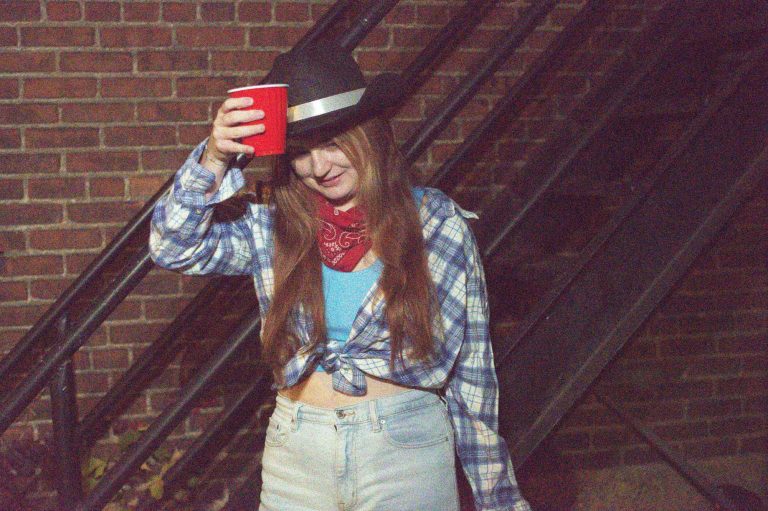Until this year, I bought my Halloween costume like everyone else. I often sourced items from SHEIN, Cider, or Amazon, or relied on pre-packaged looks from Spirit Halloween. It was cheap and convenient. I entered a simple query and instantly found thousands of options, and if I had a specific idea, I could easily zero in on the exact part.
But this summer, I finally confronted my own buying habits and made a promise to myself that I would only source new clothes second-hand. I can no longer ignore the environmental impact, waste, and abusive labor practices of these large corporations.
Trust me, I’m not here to act like I’m always the perfect example of sustainability. I can’t wrap my head around the fact that the general public, who are the main critics of fast fashion, are so quick to make an exception for Halloween, despite the waste that ensues.
I know a lot of people who don’t shop at Temu or Fashion Nova 90% of the year, but Halloween is an exception. In this day and age, sitting in a lecture in September or October just means watching someone two rows ahead of you search Amazon for “sexy girls in boots.” That’s it.
Because of the college culture of wearing multiple costumes, one for each day of Hello Weekend, people buy three times as much as they normally would. And even though they have convinced themselves, they are not going to buy these costumes to wear again. I certainly haven’t worn the beige peasant blouse I bought two years ago to become Princess Aurora. Therefore, most of these fast fashion products either end up in landfills or end up in thrift stores. Most thrift stores receive so much clothing that they can’t physically sell it all and end up shipping it to other countries. Due to the amount of waste generated, various countries have enacted literal bans on imported used clothing.
Let me be clear: buying a pre-packaged costume at a store like Spirit Halloween is impossible to wear on other occasions, and it’s cheap enough to contain toxic materials. It’s just as bad as it’s made out to be. Even if you don’t care about polluting the earth, I hope you at least care about polluting yourself.
So why are so many people, many of them college students, suddenly able to justify these harmful spending habits when it comes to Halloween? Most of the things I hear from people in my life are either convenient or cheap. They swear they can’t afford to buy costumes outside of these online stores, but then they turn around and spend $50 on a single purchase. Or you just don’t have time in your busy schedule to go to a physical store.
Well, there’s good news for everyone who is struggling with these challenges. Thrifting is often just as cheap or cheaper than shopping online, especially when you factor in shipping costs. But even if you can’t force yourself to go hunting for items in the real world, online resale sites like Depop offer a more sustainable solution. This year I bought some of my costumes from Depop. It’s a little green dress that becomes Tinkerbell. Add the wings I’ve had for years and boom! A Halloween costume made entirely from second-hand items and items you already have.
Of course, you can also look at lots of clothing and accessory items you already own for inspiration. Maybe that plaid skirt will make you the perfect Heather Chandler. If you’re into that kind of thing, that bright yellow sweater is perfect for Arthur the aardvark. We all already have so much that we often forget about our own resources.
Here, it’s much more fun and rewarding to source your costume in a more sustainable way than to grab a red corset and call it the “kiss” part of the “Kiss, Marry, Kill” trio outfit. There’s so much more room for creativity when you’re rummaging through thrift stores or digging through the back of your closet, and seeing it all come together can be so satisfying. Let’s go back to our hunter-gatherer roots and do a little scavenging.
After all, I’ll never be the social justice warrior who cheats on my friends for buying fast fashion several times a year. I really understand when you need something special that you can’t find anywhere else, or when your schedule is packed and going on a frugal trip is too much. But more people want to spend Halloween with their favorite pieces, rather than rushing to get a cheap, plastic-filled tube top or a boxed Ken costume that ends up in a landfill. I wish I could start thinking of it as an exciting opportunity to make costumes.
Bryn Murawski isn’t looking forward to walking around in the cold in a tiny dress this Hallo weekend. She wants to hear about your creative costumes (or anything else). [email protected]


